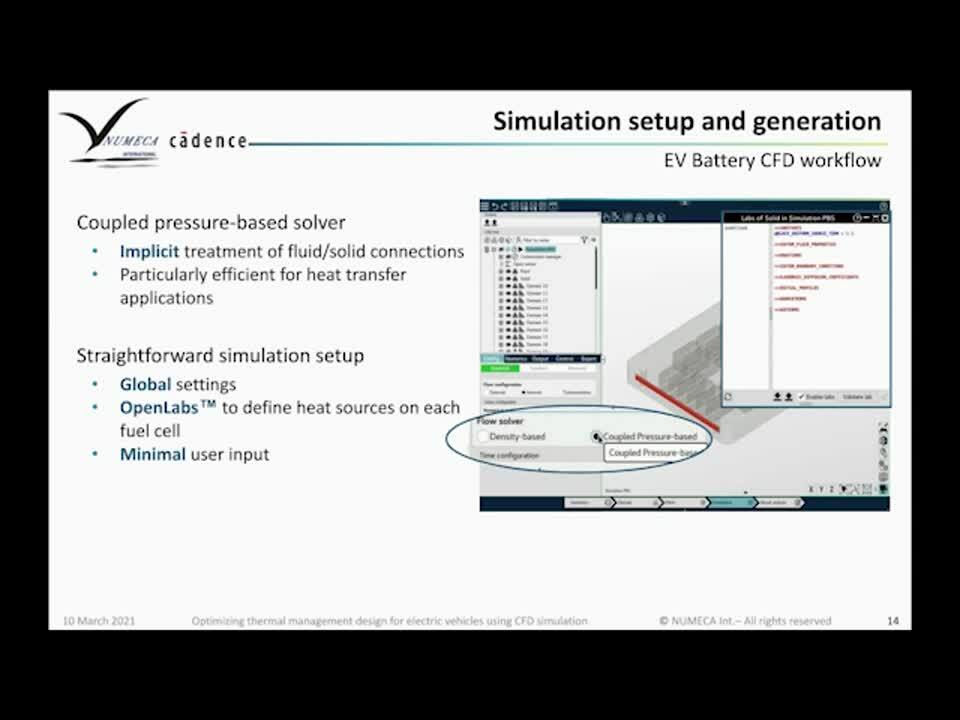Optimizing Thermal Management Design of Electric Vehicles Using CFD Simulation
Fill form to unlock content
Error - something went wrong!
Fill Out the Form to Access
Thank you!

Over the past few years, the automotive industry has witnessed massive electrification. Driven by governments and regulatory bodies, carmakers are rolling out drastic changes on their vehicle fleets: from hybridization of systems to a full ban of internal combustion engines and 100% electrification. Electric vehicles (EVs) are the driving force in the ongoing revolution, ushering in a new era of travel that is efficient, affordable, clean, and green.
However, electrifying transportation isn’t as simple as just flipping a switch. Developing electric vehicles with adequate range and fast-charge capabilities is a great endeavor. One of its main challenges is an efficient control of the heating elements. Designing the most appropriate thermal management system while keeping costs, time, and competitive edge under control, requires new engineering methodologies where simulation plays an important role.
How to optimize heat transfer and carefully monitor temperature ranges of all components of EV motors and batteries
From geometry preparation all the way to dedicated post-processing, OMNIS™ provides a robust, easy-to-use framework for the analysis and simulation of all electric components. With significantly reduced engineering and CPU time thanks to the fastest solvers and highly automated workflows, engineers can focus more time on the actual design challenges of new mobility solutions.
Outline
-
An introduction to EV battery and electric motor technologies.
-
How to automatically generate conformal meshes for both fluid and solid components.
-
How to easily set up thermal simulations.
-
How to monitor heat transfer and maximum temperature in the various components.